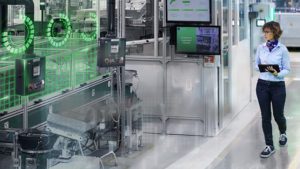What does digital acceleration mean? Is it only about doing things faster? Certainly not: speed on its own has little benefit if accompanied by errors, rework, and sub-optimal outcomes. When we think of acceleration, we must think of doing things both faster and better. The opportunities to accelerate in this sense are abundant in the engineering phase of industrial capital projects – where outcomes often fall short of objectives – and during operations when safely maximizing OPEX is the order of the day. In this blog I will describe how the integration of AVEVA Process Simulation software with Schneider Electric’s ETAP electrical digital twin solution supports digital acceleration across the lifecycle – by enabling the critical link between process and electrical engineering.
Challenges Facing Projects and Future Operations
For decades project execution performance has fallen short of expectations, particularly in energy and other heavy, process industries. There are many contributing factors but let’s focus on two here:
- Strongly interdependent engineering and project management disciplines executing work in siloes resulting in inefficiency and rework, and
- Equipment procurement being delayed, inaccurate (typically over-specified; sometimes non-conforming) or both!
To the above we must add:
- the future challenge of meeting sustainability goals while serving growing demand for energy and products: new capital facilities will need to be on time, on budget, on spec, and as sustainable as possible during operations, and
- The need to cater for an increasingly digitally native workforce operating or supporting remote and autonomous facilities.
Why Integrate Process and Electrical Engineering?
Traditionally the Electrical discipline must wait to receive a batch of design deliverables from Process before progressing their engineering work. Inevitably elements of the Process design will change – due to optimization activities or in response to other inputs – while Electrical is busy progressing its design and requisitions. Due to procurement pressure some requisitions for major equipment will go out the door before changes have been finalized; engineers have little option but to over-specify. The result is a new facility costing more than it should, whose design and delivery involved more embedded GHG than necessary, and which consumes more energy during operations than it really needs.
Digitally integrating Process and Power directly addresses the challenges described above, while enabling new ways to capture value. During engineering this approach enables:
- Progress in one discipline to be conveyed to the other at the level of design and equipment data, removing the inefficiency of traditional document-batches
- Changes in one discipline can be shared in near-real time, minimizing rework
- Designs can be optimized in terms of spec, cost, GHG impact, space, and weight—particularly in the case of power systems.
During operations, the integration of Process and Electrical domains enables:
- delivery of critical digital twin elements from the project phase into ops & maintenance, contributing to successful start-up and production, and supporting remote or autonomous operations
- An electrical digital twin integrated with the process digital twin facilitating predictive operations
- a holistic approach to asset and power system performance management, including GHG intensity.
Across the lifecycle, this integrated approach can deliver benefits such as the following—and more—through digital acceleration:
- 20% EI&C related CAPEX cost reduction
- 15% reduced downtime in ops
- 10% process energy usage reduction
- 3pts profitability improvement
Schneider Electric ETAP and AVEVA Process Simulation: Full Lifecycle Digital Acceleration
Until recently efforts to optimize an engineering or operational domain was done in isolation. Digitalization is removing these siloes, allowing meaningful acceleration and optimization in context:
- In the asset design phase, AVEVA Process Simulation can be used in conjunction with Schneider Electric’s ETAP to ensure that power systems design – including its C02 footprint – is optimized
- During operations, ETAP and AVEVA Process Simulation bring together the electrical and process elements of a true behavioral Digital Twin – fed with data from Pi and other sources – to enable near real-time optimization across a range of interconnected KPIs.
Schneider Electric is Leading the Digital Transformation of Industry
Schneider Electric delivers solutions driving efficiency and sustainability for global customers in Energies & Chemicals and beyond. Through our uniquely comprehensive family of digital solutions – which today includes AVEVA, Pi, ETAP and many others – we can help you meet today’s challenges and prepare for tomorrow’s.
If you’d like to learn more about how Schneider Electric’s digital solutions can help companies in Energies & Chemicals, please get in touch with me – visit our website here, or come see us at one of the following events:
Automa Oil & Gas Digitalization Congress 2022 – Milan, Italy – October 16th-17th, 2022
ADIPEC 2022 – Abu Dhabi, UAE – October 31st – November 3rd, 2022
AVEVA World 2022 – San Francisco, USA – November 14th-18th, 2022


